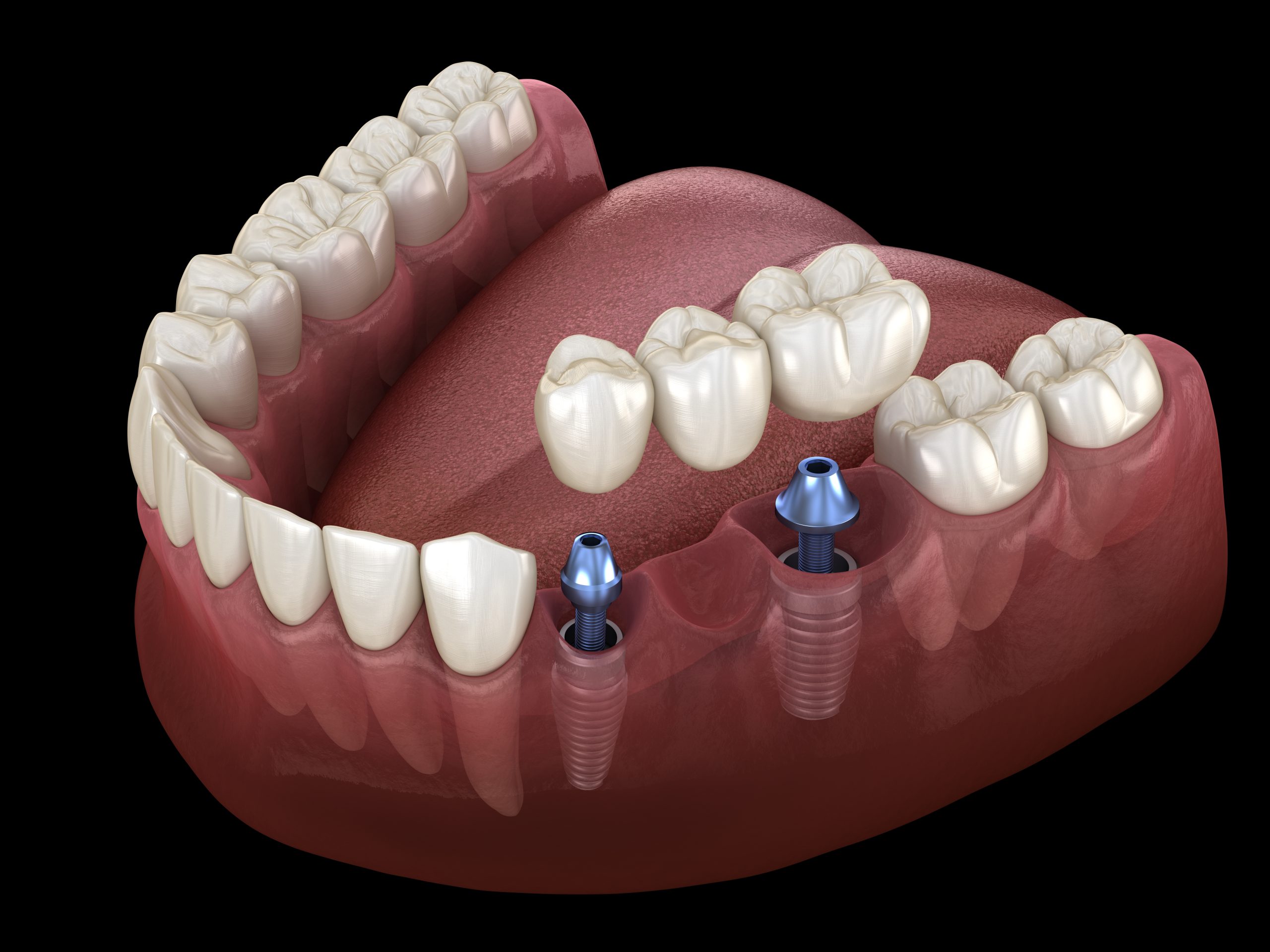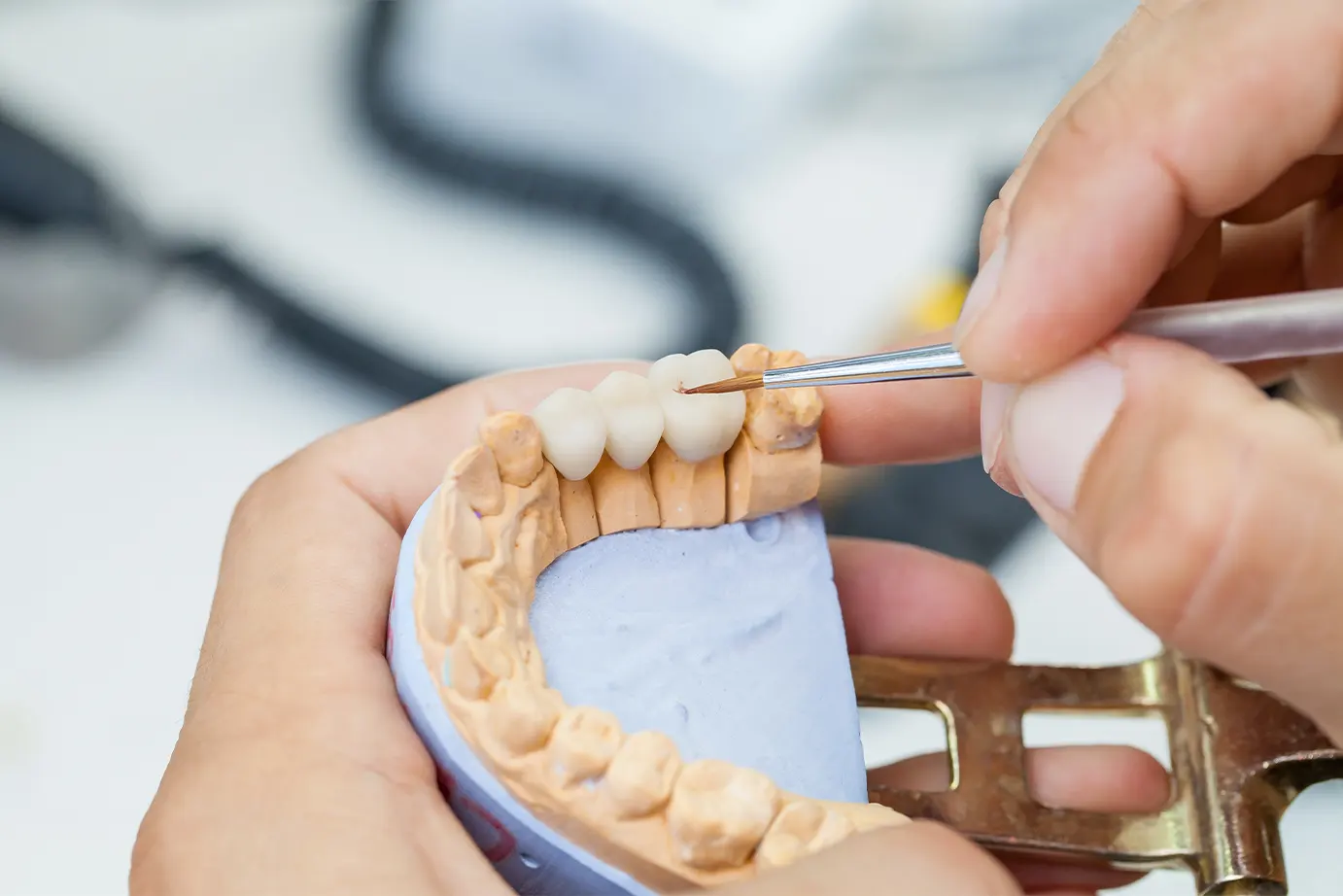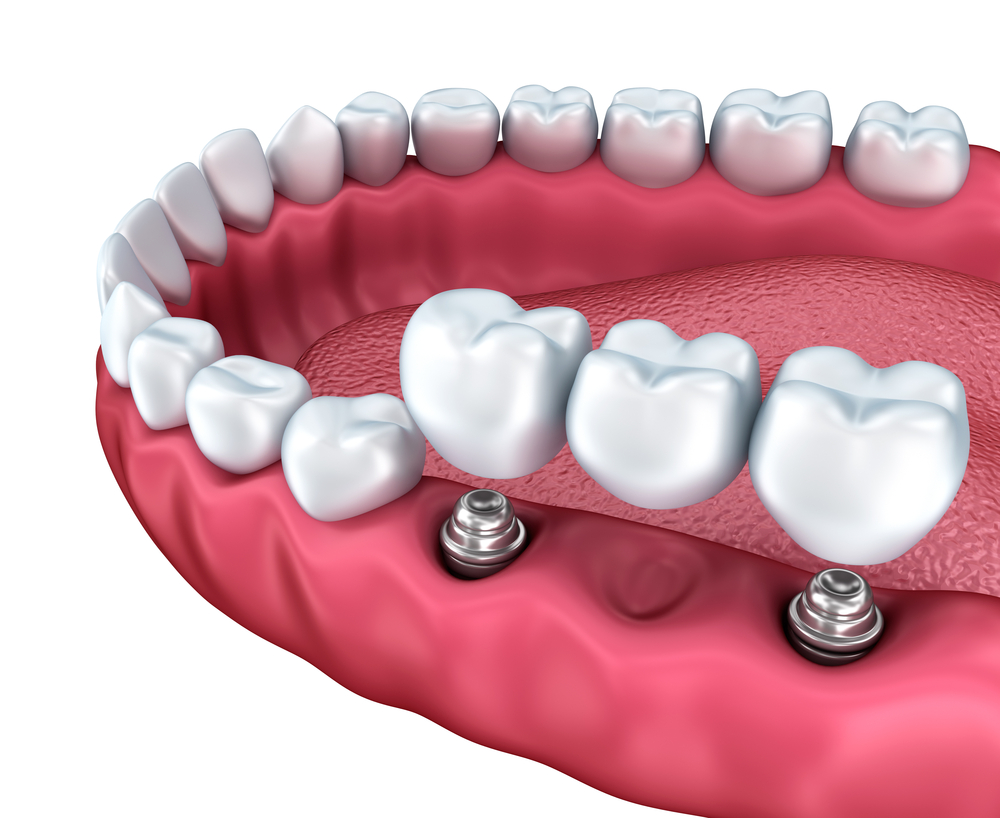Ask us about
dental bridges
If you are missing one or more teeth, contact Black Hills Area Dental today to learn more about dental bridges. Our team of skilled professionals will work with you to create a treatment plan that meets your individual needs and goals. We look forward to helping you achieve the beautiful, healthy smile you deserve!

Dental Bridges
As the name of this appliance implies, a dental bridge is made out of three or more pieces that fit into the open space in the mouth, “bridging” the gap. Most bridges are made of a pontic (false) tooth, held together by two or more abutment crowns (a “cap” that covers the tooth, approximating the tooth’s normal size and shape).
Nearly everyone who has one or more missing teeth is a candidate for a dental bridge. During your visit, Dr. Samuelson will examine your mouth and the location of the missing tooth or teeth to determine if dental bridges will work for you!
What You Should Expect When Getting Dental Bridges
Initial Consultation and Treatment Plan
The first step in getting dental bridges at Black Hills Area Dental is a consultation with Dr. Samuelson. He’ll examine your teeth and determine how suitable bridges are for addressing your concerns. If deemed suitable, he’ll create a customized treatment plan for your bridges. In some cases, he may also prepare your teeth by shaving off bits of your enamel to accommodate the bridge’s crowns.
Taking Impressions and Bridge Fabrication
Next, Dr. Samuelson will take impressions of your gums and the remaining teeth using a putty-like material to create a mold or a digital scanner for 3D renders. These impressions are couriered or emailed to an external lab. Technicians in the lab will use 3D printing and milling technology to create custom bridges to your specifications.
Bridge Fitting and Cementation
Bridges take two to four weeks to fabricate. Once ready, Dr. Samuelson will schedule an appointment to fit the bridges. During the appointment, he’ll place the bridge on the gap and check the fit. If the fit checks out, he’ll apply dental cement and place it back on the gap to cement it in place.
Final Touches and Follow-Up Appointments
Dr. Samuelson will do a final check and perform all the necessary adjustments. After a final glance, he’ll give you instructions on how to take care of your bridges for longevity. He might also schedule follow-up appointments to check your treatment’s progress.

What Are the Benefits of Dental Bridges?
The most significant benefit of dental bridges is that they restore full mouth functionality. Missing teeth make chewing difficult and cause problems with speech articulation. By filling in the missing tooth gaps, bridges allow proper chewing and speaking.
Functionality aside, bridges also improve aesthetics, bridging the gap created by missing teeth to give you a beautiful smile. A full set of teeth will boost your confidence and improve your overall quality of life, especially your social life.
Moreover, bridges also help prevent your teeth from shifting. Teeth easily shift into the space left by gaps formed by missing teeth. This can lead to crowded teeth and interfere with your feeding. Dental bridges replace the missing teeth to avoid this shifting.

How Long Does a Dental Bridge Last?
The lifespan of dental bridges varies from one patient to the next and largely depends on the type of bridges they get, their oral hygiene, and feeding habits. However, bridges usually last for five to fifteen years before failure. Fortunately, you can prolong the lifespan of your bridges by brushing, flossing, rinsing your teeth daily and scheduling routine checkups with your dentist.
Is Getting a Dental Bridge Painful?
No, getting a dental bridge is not painful because dentists use local anesthesia to numb the pain when necessary. However, patients will likely experience mild pain and discomfort after the procedure. We’ll recommend OTC painkillers and home remedies to help with the pain, which disappears in a few days.
Will My Dental Bridge Look Natural?
Yes, dental bridges are made from porcelain and ceramic, which closely resemble the tooth’s natural color. The dentist will compare the color of your teeth to a color chart to find porcelain material that closely matches your tooth’s color. The result is a beautiful and natural-looking smile.
Can Dental Bridges Be Repaired or Replaced?
Yes, dental bridges can be repaired and replaced, depending on the type and extent of damage. Replacement usually involves breaking the abutment teeth to remove the bridge and then replacing it with a new one. Sometimes, repairing the bridge can be as simple as adding dental cement to keep it in place or coating a chipped crown with filling material.
